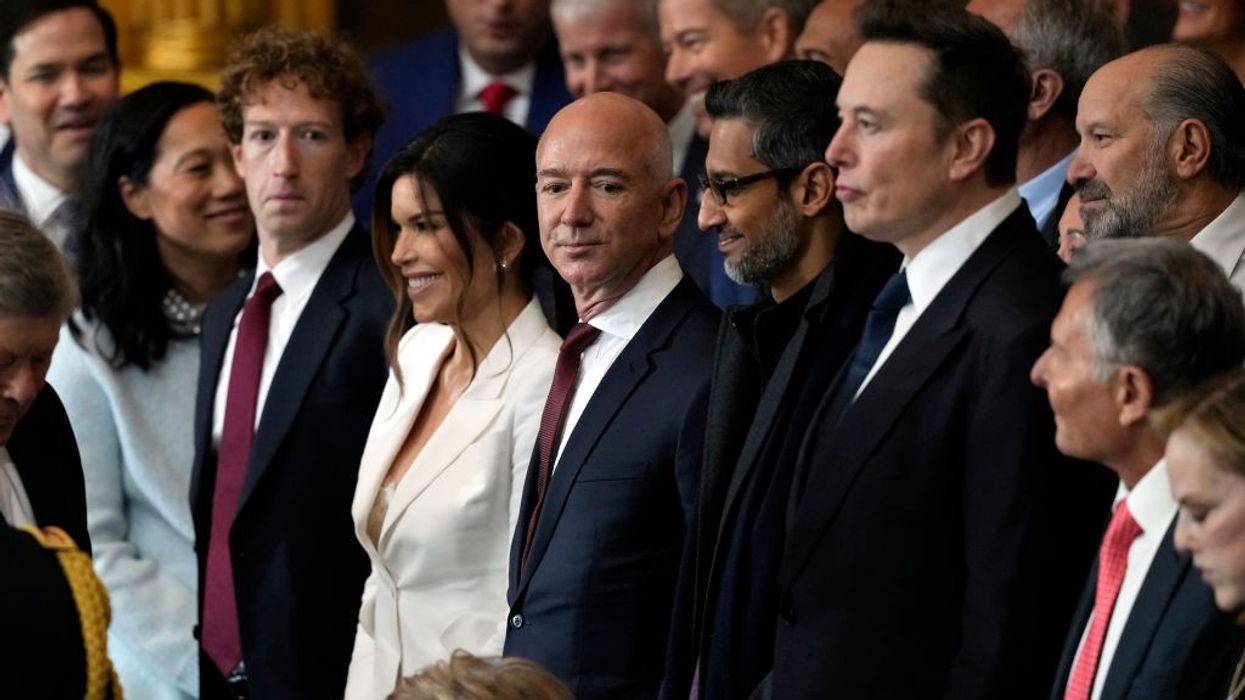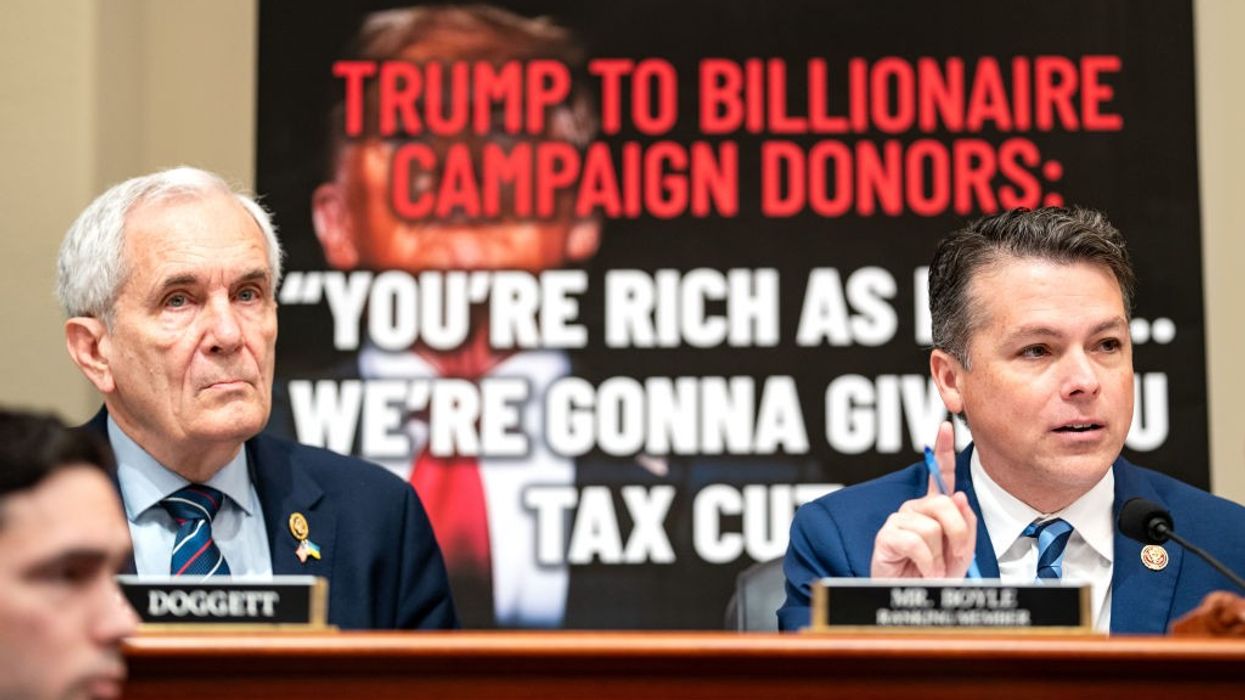Trump’s spending proposal (called his discretionary budget request) makes his vision for the country crystal clear: Unsafe food, dirty water, and worse health for the many. Industrial polluters spewing toxic chemicals, and a destroyed ability to respond to the climate crisis that endangers all of us. Millions of farmers, families, and workers struggling to get by, while corporations amass yet more profits.
In the wake of Trump’s Big, Ugly Bill, his latest spending proposal is the opening salvo of another battle. Congress is now working to enact this vision, using this Trump proposal as a framework for its annual spending legislation. Here’s what’s at stake and how we’ll fight back.
Trump Promises Dirtier, Privatized Water
Not long ago, the United States’ rivers were so choked with pollution, they caught fire. Federal laws, like the Clean Water Act, changed that. Now, vast swaths of the country can depend on their taps for clean water.
Trump would drag us closer to those dark days by slashing programs that prevent pollution. His cuts would be a boon to corporate polluters who would rather preserve their profits than clean up their act.
Trump’s proposal has made his policy intentions clear—dirty water for all.
At the same time, he’s going after funding for infrastructure improvements we need to make our water safe and affordable. Federal government funding is crucial for water infrastructure for states, Tribes, and municipalities. However, this funding has plummeted in recent decades, and Trump wants to cut them even more drastically.
Trump’s deep cuts to water funding also serves as a ploy to encourage water systems to sell off their water systems to private corporations. And we already know that private water systems lead to less local control of water, higher water bills, and worse customer service.
Specifically, his spending plan called for:
Slashing Research and Regulation of Toxic Pollution
His plan calls for a 54% cut from the budget of the Environmental Protection Agency (EPA). The EPA is key for researching and regulating toxic chemicals that poison our water. Without a strong EPA, we can’t address threats to our water like PFAS “forever chemicals” and microplastics.
Virtually Eliminating Funding for Drinking Water
Trump’s plan calls for a nearly 90% cut to the Drinking Water and Clean Water State Revolving Funds, the main channels for federal dollars to states and localities for safe and clean water (that’s a cut of more than $2 billion).
Trump wants to completely eliminate these funds going forward, encouraging states to find “alternative funding sources” that could lead to private equity takeovers of local water supplies.
Dirtier Beaches and Dirtier Water
Trump’s plan calls for a complete elimination of many programs that provide clean water grants. That includes all EPA grants for beach protection, pollution control and prevention, clean and safe water technical assistance, and more.
Leaving Tribes and Rural Communities High and Dry
His plan would make huge cuts to water and wastewater grants specifically for Tribes and rural communities.
House Republicans lawmakers recently released their proposal for cuts to EPA and drinking safe and clean water programs, and while they aren’t as deep as Trump demanded, it would still be disastrous for our communities. And Trump’s proposal has made his policy intentions clear—dirty water for all.
Trump Takes Away Key Support for Farmers and Families
Trump’s spending plan also attacks programs that feed millions of families, support farmers and ranchers, and make our food more safe and sustainable. At the same time, Trump’s plan includes major giveaways to Big Ag. For one, he wants to completely eliminate funding for the EPA’s pesticides program and enforcement. The House Republican spending proposal would take a step in that direction by including Cancer Gag Act language to block EPA from improving rules for warning labels on pesticides.
Despite Health and Human Services Secretary Robert F. Kennedy Jr.’s rhetoric, his boss is working to make our food supply more dangerous for farmers, farm workers, and anyone who eats, helping pesticide companies to further profit from their toxic products.
Additionally, Trump would gut enforcement of the Packers and Stockyards Act. Without enforcement, meat corporations will get away with more dirty tactics in the market, putting livable incomes even further out of reach for farmers and ranchers.
Trump wants to:
Condemn People to Hunger
His spending plan slashes $748 million from the Agriculture Department’s (USDA) Food and Nutrition Service (on top of what the Big Ugly bill already slashed).
These cuts threaten the Supplemental Nutrition Assistance Program (SNAP), which helps more than 40 million people put food on the table. The cuts may also impact WIC, the SNAP program targeted to Women, Infants, and Children, and school lunch programs.
Roll Back Sustainable Agriculture
Trump’s plan reduces funding for the Nation Resources Conservation Service by almost 90%, from $916 million to $112 million. This threatens programs that support urban agriculture, conservation, and educational opportunities for farmers.
Undermine Conservation and Disaster Recovery
His spending plan slashes Farm Service Agency funding by $372 million, cutting loans and assistance to farmers for conservation and disaster recovery.
Completely Eliminate Good Food Programs
His plan zeros out key programs like the Source Water Protection Program, Geographically Disadvantaged Farmers and Ranchers, and Farmers Market and Local Food Promotion that support farmers and a more resilient and sustainable food system.
Trump Wants Big Oil to Wreak Havoc on Our Planet
Our reliance on fossil fuels is making us sicker and poorer. From toxic pollution, to volatile energy prices, to the climate crisis, the harms are vast and growing. Trump’s budget would add fuel to the fire by clawing back funding for clean, renewable energy and ramping up support for Big Oil and Gas.
This will put more profits in the pockets of fossil fuel tycoons, while fossil-fueled climate change makes our power bills even more expensive. At the same time, Trump’s proposal would completely eliminate the Low Income Home Energy Assistance Program, which helps about 6 million people keep the lights on.
As if that weren’t bad enough, Trump would kneecap federal programs that predict and respond to life-threatening climate disasters, even as those disasters grow in frequency and intensity. In the wake of horrific flash flooding in central Texas, these cuts will kill people.
Specifically, Trump’s spending plan:
Promotes Dirty Fossil Fuels
His spending plan allocates $2 billion to a new “Fossil Energy Programming” line item and increases spending for fossil fuel research and development.
Slashes Solar, Wind, and Energy Efficiency
His plan cuts funding by at least $6.2 billion. That includes the elimination of USDA funding ($500 million) for renewable energy and energy efficiency programs for farmers. Trump also calls for eliminating the Department of Interior’s onshore renewable energy and offshore wind programs.
Halts Vital Climate Change Research
The plan calls for the total elimination of the research arm of the National Oceanic and Atmospheric Administration, closing all its weather and climate labs and slashes NASA climate monitoring.
Attacks Disaster Recovery
Trump’s plan eliminates a third of the Federal Emergency Management Agency (FEMA) budget. Trump released his new proposal just days before he announced plans to start “phasing out” FEMA entirely.
Already alarms are being rung that the elimination of critical services due to mass layoffs and cuts at the National Weather Services and FEMA have hampered emergency preparations and response to the devastating floods in Texas.
Join Us in Stopping Trump’s Vision from Becoming Reality
Trump’s spending vision shows his hand in stark numbers. It depicts a country where basic government functions—like keeping water safe and providing safety nets—are destroyed and corporate polluters can do what they please in the name of profits.
If Congress follows his direction, we face a sicker, hungrier, poorer nation. More family farms will have to shutter. More pollution will flood our waterways. Lives and our livable future is at stake.
Congress controls the purse strings, and right now Congress members are writing this spending bill. We need to remind them that they answer to us—not Trump.
But we know that with concerted, strategic efforts, we can overcome much of Trump’s agenda. Already, we’ve defeated several terrible provisions moving through Congress. With dedicated supporters like you, we’ve stopped Republican efforts to roll back a key water safety rule and successfully defended school lunch programs from direct cuts and public lands from privatization.
In the end, Congress controls the purse strings, and right now Congress members are writing this spending bill. We need to remind them that they answer to us—not Trump. That’s why, over the next couple months, Food & Water Watch will relentlessly fight these cuts. Since inauguration day, Food & Water Watch staff, members and supporters have rallied dozens of times, sent tens of thousands of calls and emails, met with lawmakers and staffers, and made our voices heard in social media and news outlets.
This is the kind of energy and action we need to push our leaders in Congress to do the right thing. They must stand up against Trump and stand up for us.


